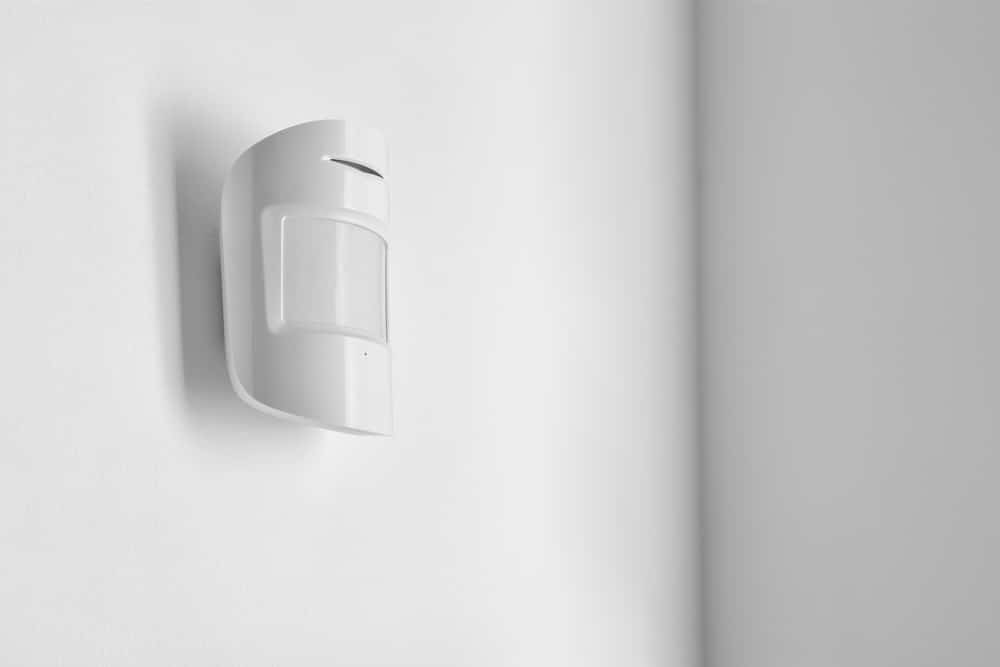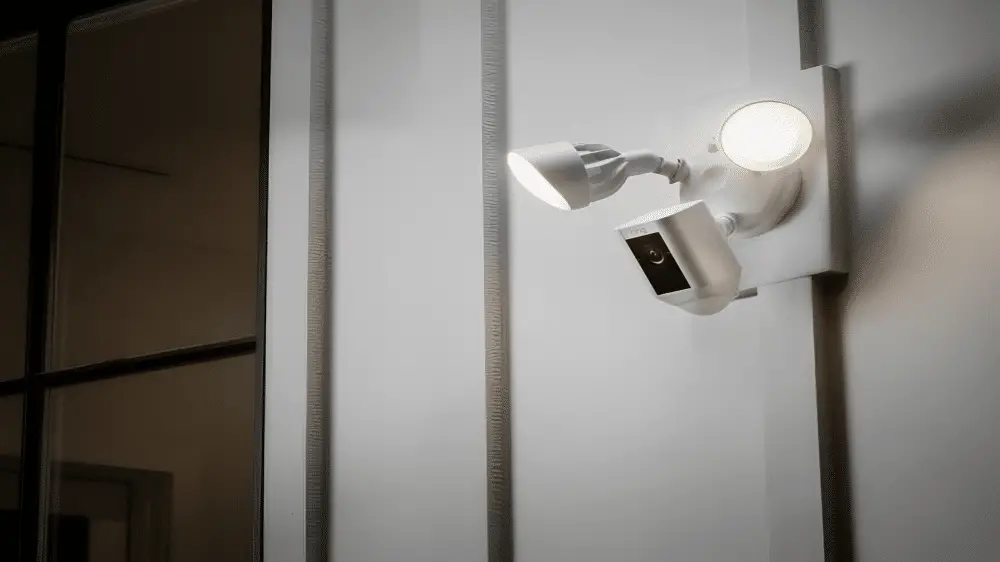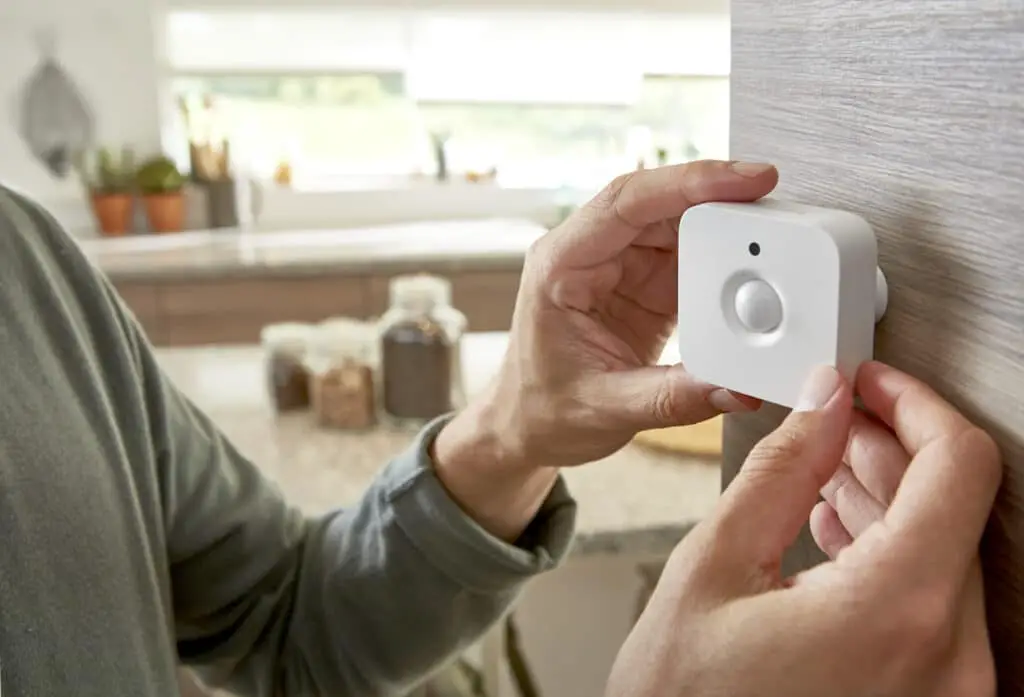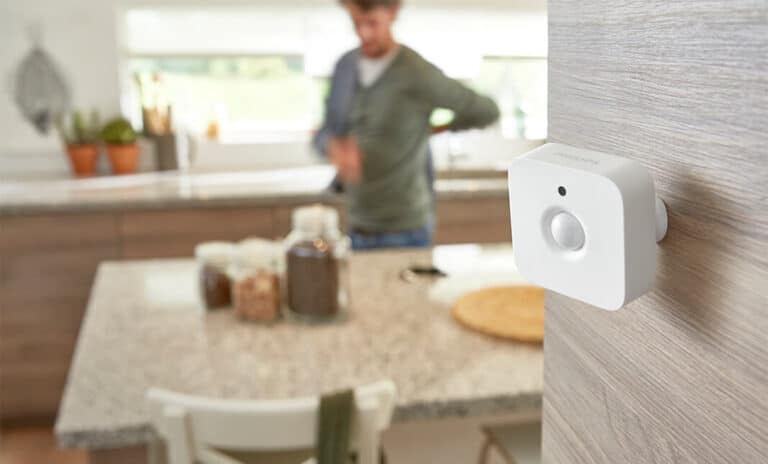Introduction
Adding a motion sensor to an indoor light is a practical and efficient way to enhance the functionality and energy efficiency of your lighting setup. By incorporating motion detection technology, your indoor light can automatically turn on when someone enters the room and turn off when there is no motion, reducing unnecessary energy consumption and providing added convenience.
The process of adding a motion sensor to an indoor light involves the integration of a motion sensor switch or module into the existing wiring system. A motion sensor switch typically replaces the traditional light switch, while a module can be installed in-line with the wiring. Both options offer the ability to detect motion and control the power supply to the light fixture.
Adding a motion sensor to an indoor light provides several benefits. First and foremost, it enhances convenience by eliminating the need to manually switch the light on and off. When someone enters the room, the motion sensor detects their movement and activates the light automatically. This is particularly useful in areas such as hallways, entryways, or closets, where hands-free operation is desired.
Motion sensors in indoor lights boost energy efficiency. It prevents lights from being left on while no one is home, saving electricity. This feature is useful in restrooms and utility areas where lights are sometimes neglected. Motion sensors save energy and money by only lighting the space when motion is detected.

Can I add a motion sensor to an existing indoor light?
Easy installation; screw the sensor into any existing light socket, then install a bulb up to 100 W into the control. Compatible with LED, incandescent, and CFL bulbs.
Yes, it is possible to add a motion sensor to an existing indoor light. Adding a motion sensor can provide convenience and energy efficiency by automatically turning on the light when someone enters the room and turning it off when the room is unoccupied. Here are the general steps to add a motion sensor to an existing indoor light:
Choose the right motion sensor
Choose a motion sensor that fits your light fixture and wiring. Sensors can be freestanding, attached to the light’s electrical circuitry, or replace light switches.
Turn off the power
Before starting any electrical work, turn off the power to the light fixture at the circuit breaker to ensure your safety.
Install the motion sensor
Follow the manufacturer’s instructions to install the motion sensor. This typically involves removing the existing light switch or accessing the electrical wiring behind the fixture and connecting the sensor accordingly.
Adjust the settings
Many motion sensors allow you to adjust settings such as sensitivity, timer duration, and ambient light levels. Customize these settings according to your preferences.
Test and calibrate
After installation, restore power and test the motion sensor by walking into the room. Make any necessary adjustments to ensure the sensor detects motion accurately and triggers the light accordingly.
For safe installation and installation, ask a certified electrician if you’re unsure about electrical work.
Can I turn a normal light into motion sensor?
The easiest way to turn a standard light into a motion-activated light is to purchase a motion-activated bulb! These bulbs have a built-in passive infrared sensor, which often looks like a little nub that sticks out at the tip of the bulb.
Yes, you can convert a normal light into a motion sensor-activated light with the help of motion sensor technology. Motion sensor lights are designed to detect movement in their vicinity and automatically turn on when motion is detected. Here’s a general overview of how you can achieve this:
Purchase a motion sensor
First, obtain a motion sensor that is compatible with your existing light fixture. These sensors can be found at hardware stores or online retailers.
Turn off the power
Before you begin any work, turn off the power to the light fixture at the circuit breaker or fuse box to ensure your safety.
Remove the existing switch
Depending on the motion sensor, you may need to replace your wall switch with an on/off switch or bypass it.
Install the motion sensor
Follow the manufacturer’s instructions to connect the motion sensor to the light fixture. This usually involves connecting wires from the sensor to the light fixture and the power source.
Adjust the settings
Many motion sensors have adjustable settings such as sensitivity, duration, and ambient light sensitivity. Customize these settings according to your preferences.
Test the setup
After installation, restore power to the light fixture and test the motion sensor to ensure it is working correctly. The light should now turn on automatically when motion is detected.
Keep in mind that the exact process may vary depending on the type of motion sensor and light fixture you have. If you’re unsure or uncomfortable with electrical work, it’s best to consult a professional electrician for assistance. Safety should always be a top priority when dealing with electrical installations.
Do you need an electrician to install a motion sensor light?
It’s never too late to replace your manual mechanical light switch with a smart, motion-activated one, and wiring and installing a motion sensor light switch can be fast and easy. You don’t need to call an electrician for the job.
Whether or not you need an electrician to install a motion sensor light depends on your electrical knowledge and the complexity of the installation. If you have experience with electrical work and feel confident in handling wiring and connections, you may be able to install a basic motion sensor light yourself.
If you are unfamiliar with electrical systems or the installation includes intricate wiring, employ a licensed electrician. Electrical work is dangerous, and poor installation can cause shocks, fires, and light fixture damage.
An electrician has the expertise to ensure the motion sensor light is installed correctly and safely. They can identify the appropriate wiring connections, voltage requirements, and proper placement of the sensor for optimal functionality.
How do indoor motion sensors work?
An active ultrasonic motion detector emits ultrasonic sound waves that reflect off objects and bounce back to the original emission point. When a moving object disrupts the waves, the sensor triggers and completes the desired action, whether this is switching on a light or sounding an alarm.
Passive infrared (PIR) indoor motion sensors detect movement in enclosed spaces. Security, home automation, and energy-saving applications employ them. Their functionality relies on infrared radiation from warm objects like humans and animals.
The basic components of an indoor motion sensor include a PIR sensor, a Fresnel lens, and a processing circuit. The PIR sensor consists of two small, rectangular pyroelectric sensors that can detect changes in infrared radiation. The Fresnel lens focuses infrared radiation from the monitored region onto the PIR sensor, boosting its sensitivity.
When an individual or an object moves within the sensor’s field of view, the temperature difference between the object and the background causes a change in the detected infrared radiation pattern. The PIR sensor detects this change, generating a voltage signal that indicates motion.
The processing circuit analyzes voltage signals and uses algorithms to distinguish motion from spurious triggers like air conditioning or heating temperature fluctuations. The sensor activates lights, alerts, or notifies a connected system whenever motion is detected.
Do motion sensor lights work during the day?
While many would assume they only work at night, motion sensor lights stay active during the day (as long as they are on). What does this mean? If your light is on, it will automatically illuminate at any motion detection, even in broad daylight.
Motion sensor lights are designed to activate when they detect movement, typically during low light conditions or at night. During the day, these lights can still function, but their effectiveness may vary depending on their specific design and settings.
Most motion sensor lights are equipped with a built-in photocell or light sensor that measures the ambient light levels. This sensor prevents the light from turning on during daylight hours, saving energy and reducing unnecessary activations. Therefore, in bright daylight, the motion sensor will recognize the abundance of natural light and inhibit the light from activating.
However, certain factors can influence the motion sensor’s sensitivity during the day. In shaded areas or outdoor environments with quick light level changes due to overcast skies or fast-changing weather, the sensor may misinterpret the variations as a trigger for activation.

How do I install a motion sensor for indoor lights?
The installation process may vary depending on the type and model of the motion sensor you purchase. However, the general steps usually involve turning off the power to the light circuit, removing the light fixture, connecting the motion sensor wires between the power source and the light fixture, and securing the sensor in place. Always follow the manufacturer’s instructions for the specific sensor you are using, and if you’re unsure, consider hiring a professional electrician for installation.
Installing a motion sensor for indoor lights is a straightforward process that can enhance both convenience and energy efficiency in your home. Here’s a step-by-step guide to help you through the installation:
Select the Motion Sensor
Choose an indoor motion sensor that works with your lights. Most sensors work with LED, incandescent, or fluorescent lamps.
Prepare Tools and Turn Off Power
Gather the necessary tools, including a screwdriver, wire stripper, wire nuts, and voltage tester. Before starting, turn off the power to the existing light fixture from the circuit breaker to ensure safety.
Remove the Existing Light Switch
Unscrew and carefully remove the existing light switch cover. Then, unscrew the switch from the electrical box and gently pull it out, exposing the wires.
Disconnect Wires
Take note of the wire connections on the old switch (usually two black wires). Disconnect them by loosening the terminal screws or cutting the wires if they are connected with wire nuts.
Wire the Motion Sensor
Follow the instructions provided with the motion sensor to connect the wires. Typically, you’ll connect the black wire to the “hot” or “live” wire, the white wire to the neutral wire, and the green or bare copper wire to the ground wire.
Mount the Motion Sensor
Attach the motion sensor to the electrical box using the provided screws. Ensure it fits securely and doesn’t obstruct the light’s function.
Test the Wiring
After connecting the wires, turn the power back on and use a voltage tester to verify that the sensor is receiving power.
Adjust Settings
Most motion sensors allow you to adjust the sensitivity, duration of light, and range. Fine-tune these settings according to your preferences.
Install the Light Fixture
As directed by the manufacturer, put the indoor light fixture over the motion sensor after installation.
Test the Motion Sensor
Test the motion sensor by walking in front of it to ensure the lights turn on and off as expected.
Remember, if you’re unsure about any step in the process, consult a licensed electrician to ensure a safe and proper installation. Safety should always be a priority when working with electrical components.
Can I use a motion sensor with different types of indoor lights?
Yes, motion sensors are compatible with various types of indoor lights, including LED, incandescent, fluorescent, and halogen lights. Make sure to check the specifications of the motion sensor to ensure it supports the type and wattage of the light bulbs you plan to use. Some sensors may have specific recommendations or limitations regarding compatible light types.
Various interior lights can employ motion sensors. Motion sensors turn lights on and off when they sense movement. Automated lighting in indoor settings provides convenience, energy savings, and security.
Most motion sensors are compatible with a wide range of indoor light fixtures, including incandescent, fluorescent, LED, and compact fluorescent lights (CFLs). However, it’s essential to check the specifications of both the motion sensor and the light fixture to ensure compatibility.
Some considerations when using a motion sensor with different indoor lights:
Wattage and Load
Confirm that the motion sensor can handle the wattage or electrical load of the connected lights. It should be rated appropriately to avoid any issues or damage.
Dimmable Lights
If you plan to use dimmable lights, ensure that the motion sensor is compatible with dimmable fixtures, as not all motion sensors support dimming functionalities.
Bulb Type
Different motion sensors may work better with specific types of bulbs, so it’s a good idea to follow the manufacturer’s recommendations.
Placement
Properly position the motion sensor to ensure it effectively detects movement in the desired areas without triggering false alarms.
Sensitivity and Settings: Adjust the sensitivity and timeout settings of the motion sensor to fit your preferences and needs.
By selecting a motion sensor that is compatible with your indoor light fixtures and adjusting the settings accordingly, you can enjoy the benefits of automated lighting control and save energy in your home or workplace.
Can I add a motion sensor to my existing indoor lights?
Yes, in most cases, you can add a motion sensor to your existing indoor lights. Many motion sensors can be retrofitted into light fixtures. Motion sensor kits include hardware and instructions for installing the sensor between the power source and light fixture.
Yes, you can add a motion sensor to your existing indoor lights to enhance convenience, energy efficiency, and security. Motion sensors are devices that detect movement and can automatically switch on or off lights in response to that motion.
To install a motion sensor for your existing indoor lights, follow these general steps:
Choose the right sensor
There are various types of motion sensors available, such as infrared, ultrasonic, or microwave sensors. Select one that suits your needs and fits well with your indoor space.
Turn off the power
Before starting any electrical work, turn off the power to the existing lights from the circuit breaker to avoid accidents.
Mount the sensor
Install the motion sensor near the lights you want to control. Most sensors can be easily mounted on walls or ceilings with screws or adhesive.
Connect the wiring
If you’re confident with electrical work, you can connect the motion sensor to the existing wiring. Otherwise, it’s best to seek the assistance of a licensed electrician to ensure a safe installation.
Adjust settings
After installing and wiring the sensor, you can choose its sensitivity, activation time, and other settings.
activity sensors can conserve energy by turning down lights when no one is in the room and offer security by illuminating the space when activity is sensed. It’s a great way to enhance your lighting without replacing your lights.

Conclusion
Adding a motion sensor to an indoor light can significantly enhance convenience, energy efficiency, and overall functionality. By following a few simple steps, you can transform your existing indoor light into a motion sensor-activated one, providing automatic illumination whenever motion is detected.
The process of adding a motion sensor to an indoor light involves selecting a compatible motion sensor switch or module. There are various options available, including standalone motion sensors or integrated sensor switches. It’s important to choose a sensor that is suitable for the type of indoor light fixture you have and can handle the power requirements of the existing bulb.
Once you have selected the appropriate motion sensor, installation is relatively straightforward. Start by turning off the power to the light at the circuit breaker or fuse box. Remove the existing switch or fixture cover and connect the motion sensor according to the manufacturer’s instructions. This typically involves connecting the necessary wires and mounting the sensor in a strategic location.

